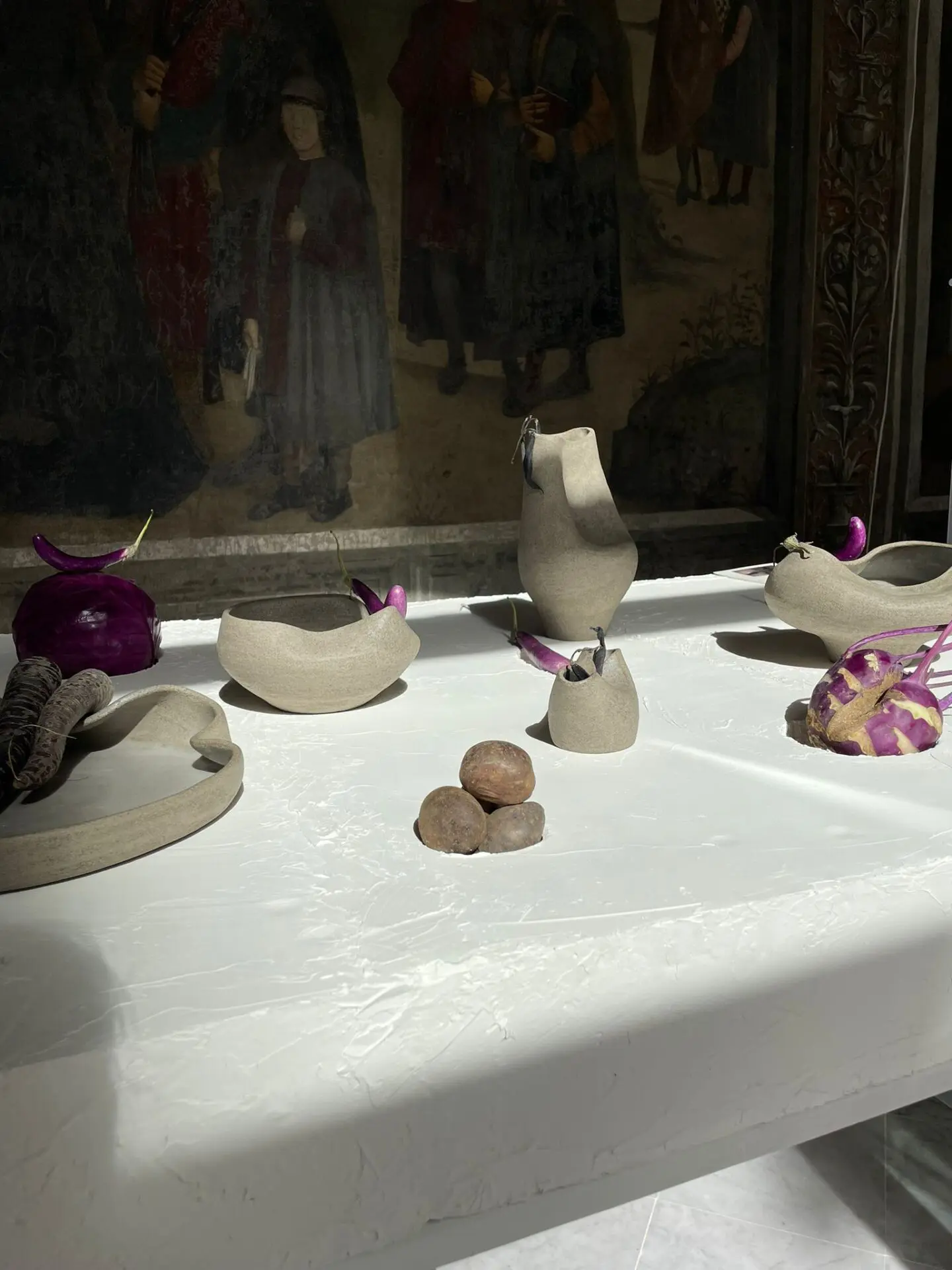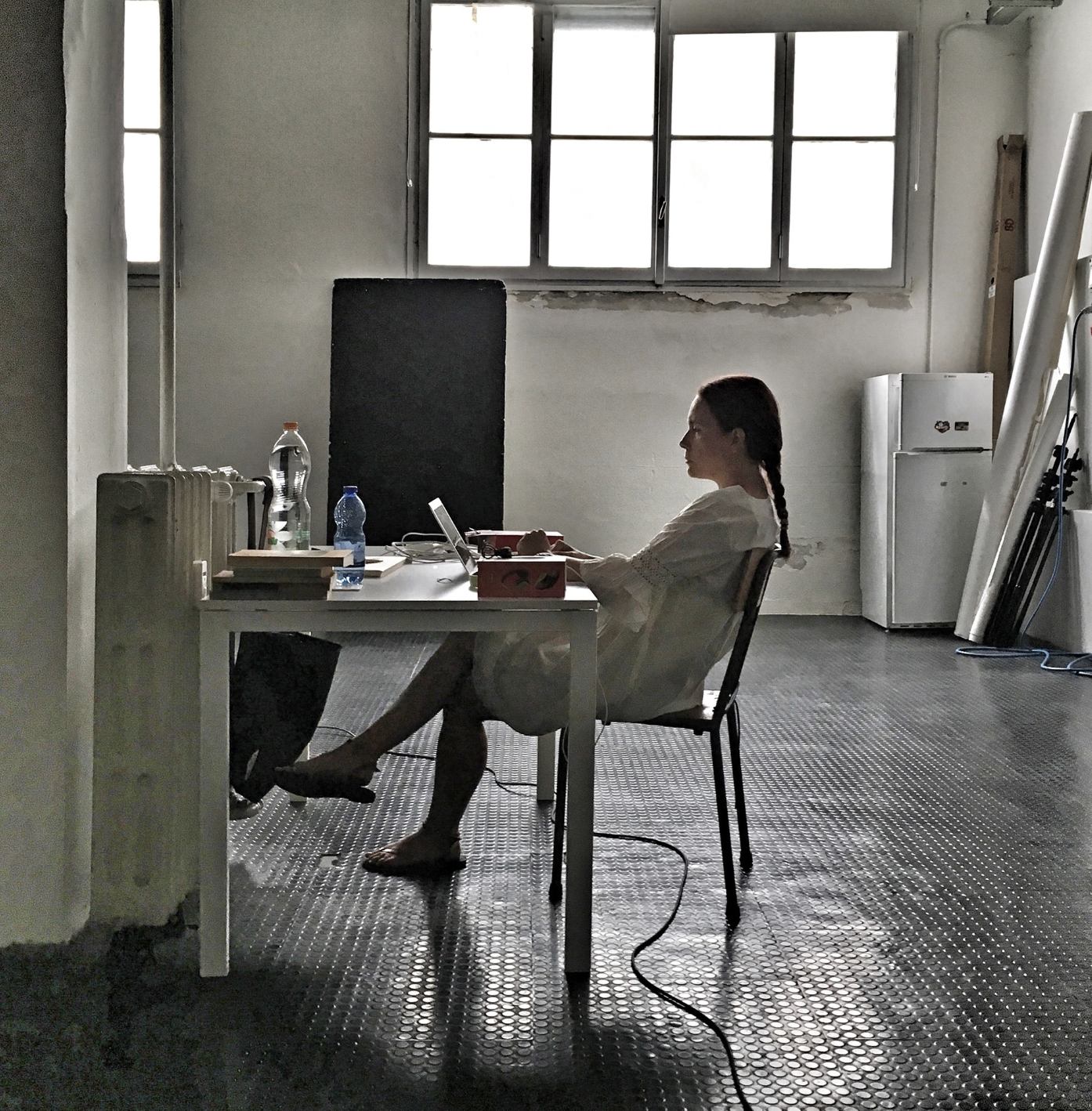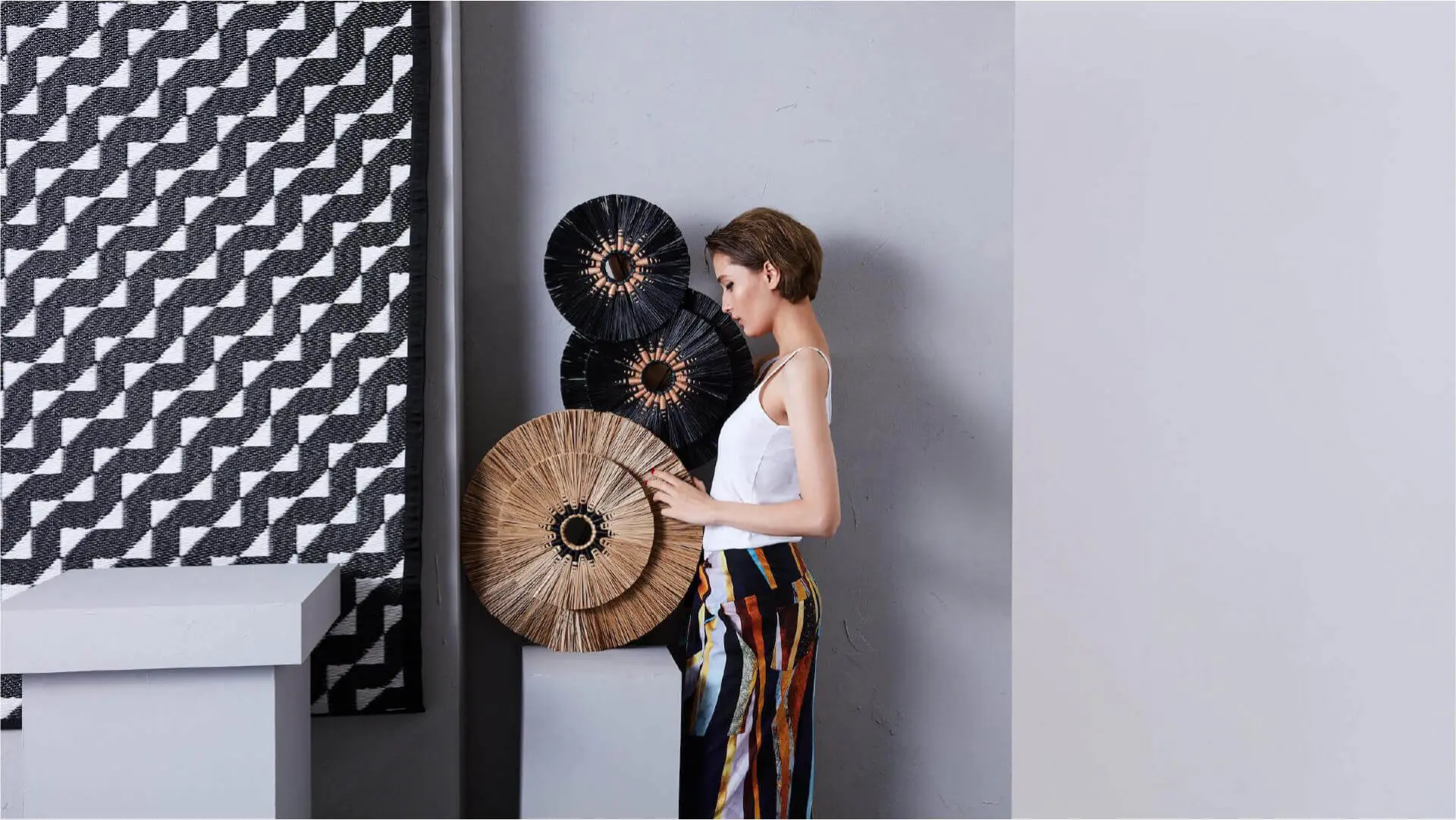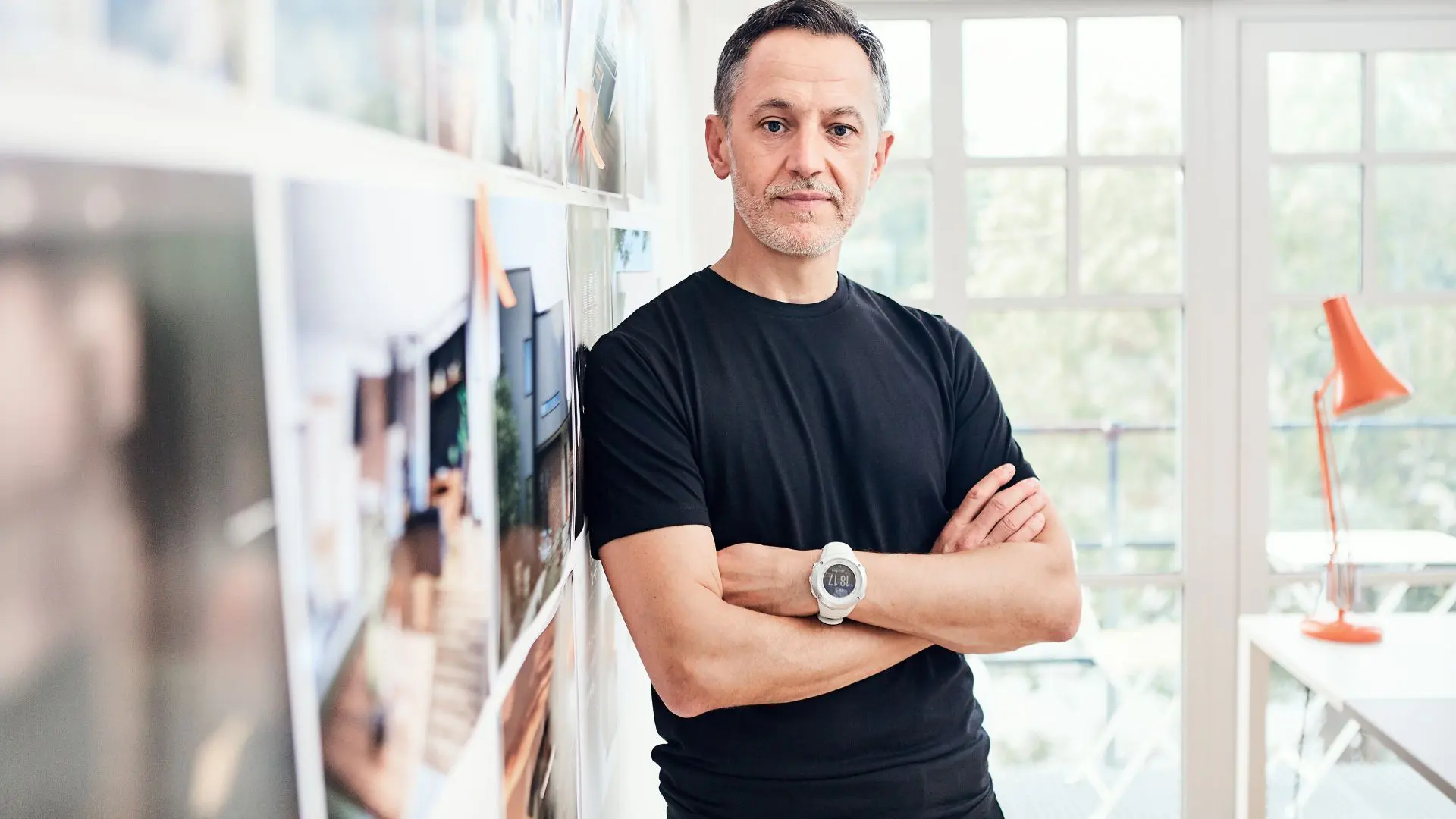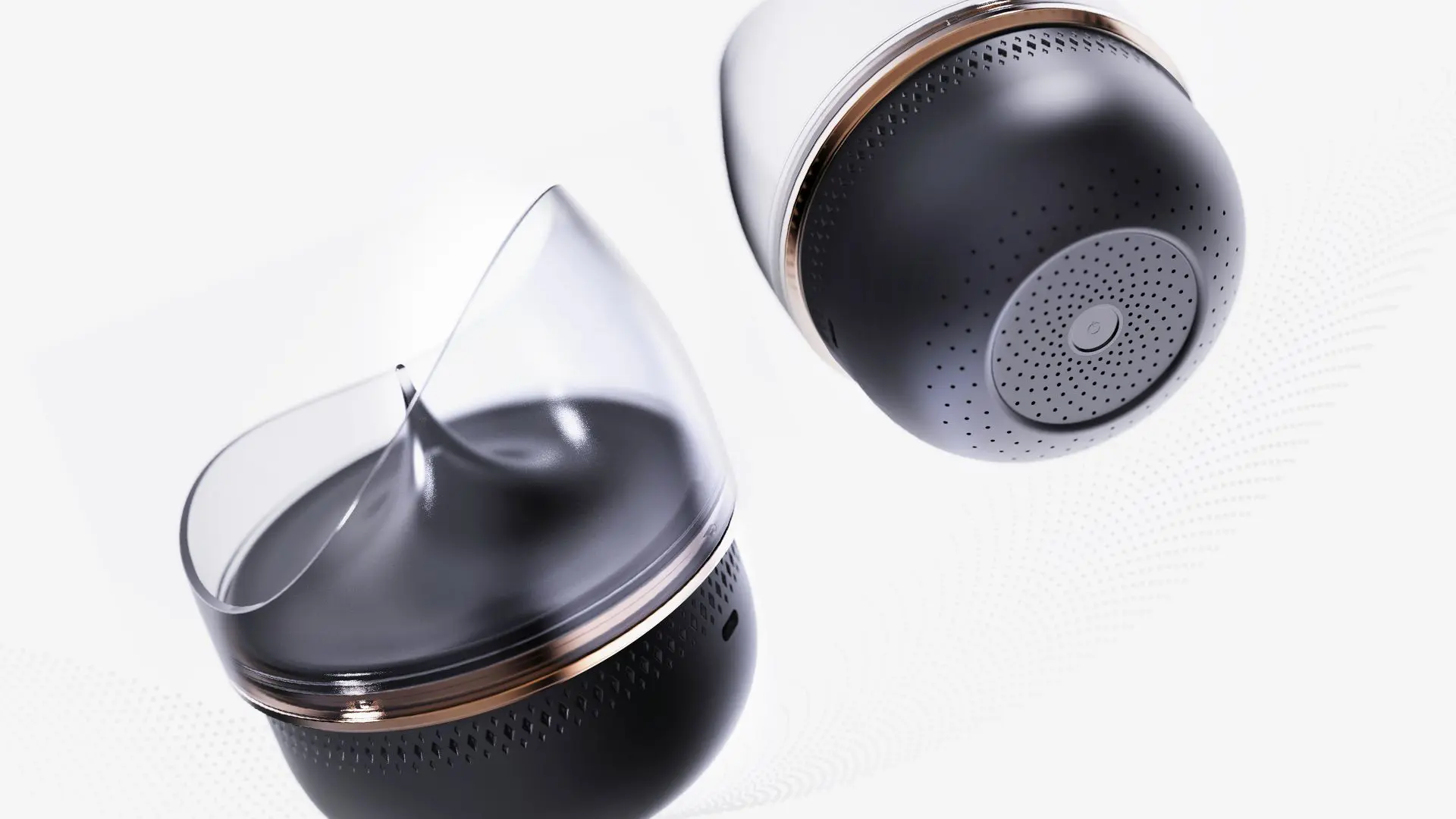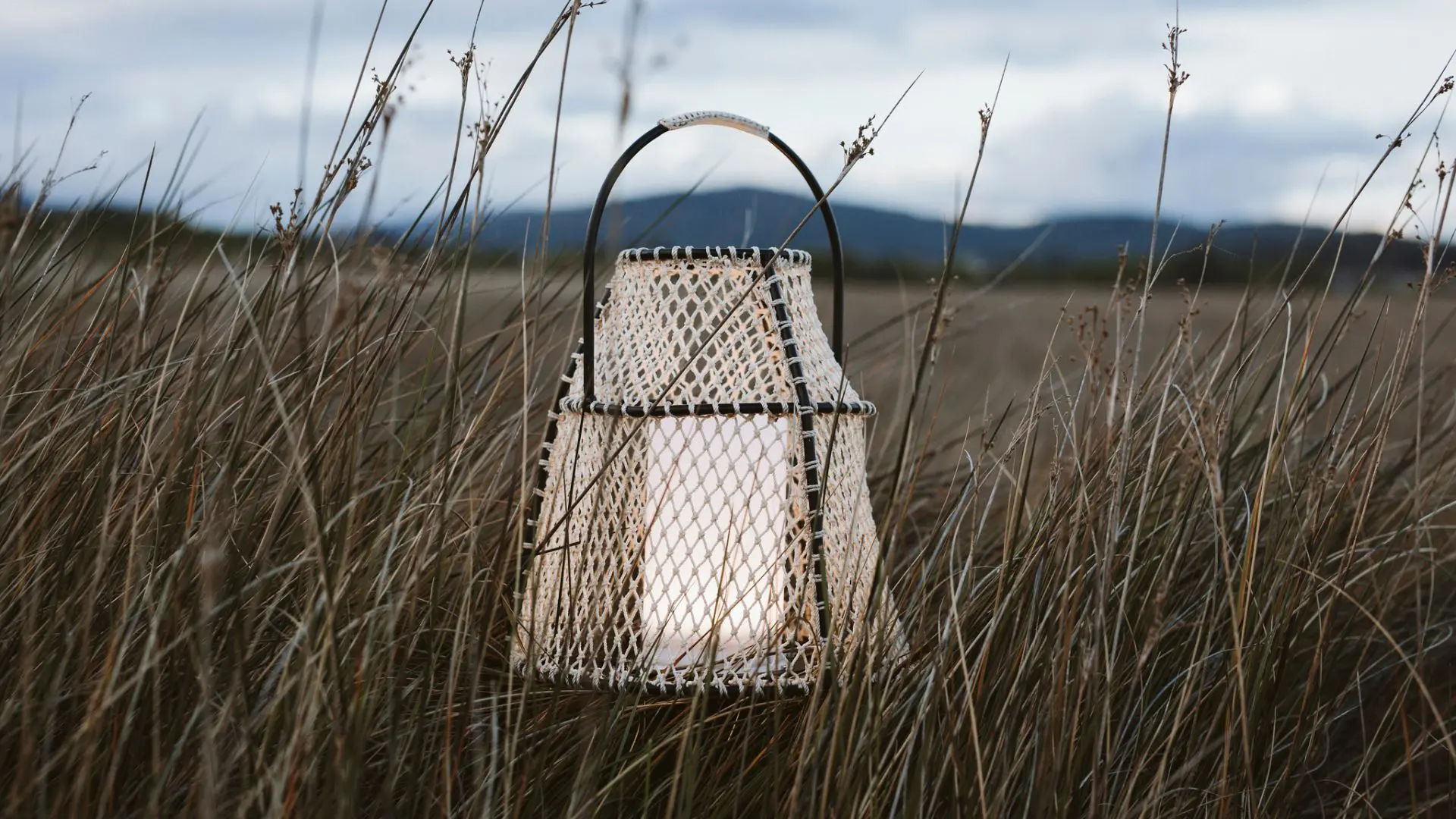Crafting today: highlight projects from EDIT Napoli 2024
The sixth edition of the editorial and authorial design fair has ended and EDIT Napoli is becoming more and more the place to be if you want to see real projects and talk about good design.

An event, a collective exhibition, a meeting of elective affinities, if you like. But EDIT Napoli is not just a fair, for sure. Not in its most traditional sense. The two founders Domitilla Dardi and Emilia Petruccelli embarked six years ago on an audacious adventure, demonstrating that the curatorial work behind a design event (be it a festival, a fair, or a conference) is adamant to make it valuable and meaningful.
And that sometimes you have to make choices between quantity and quality, neglecting maybe the temptation to become richer and bigger to protect the foundational high standards of the event.
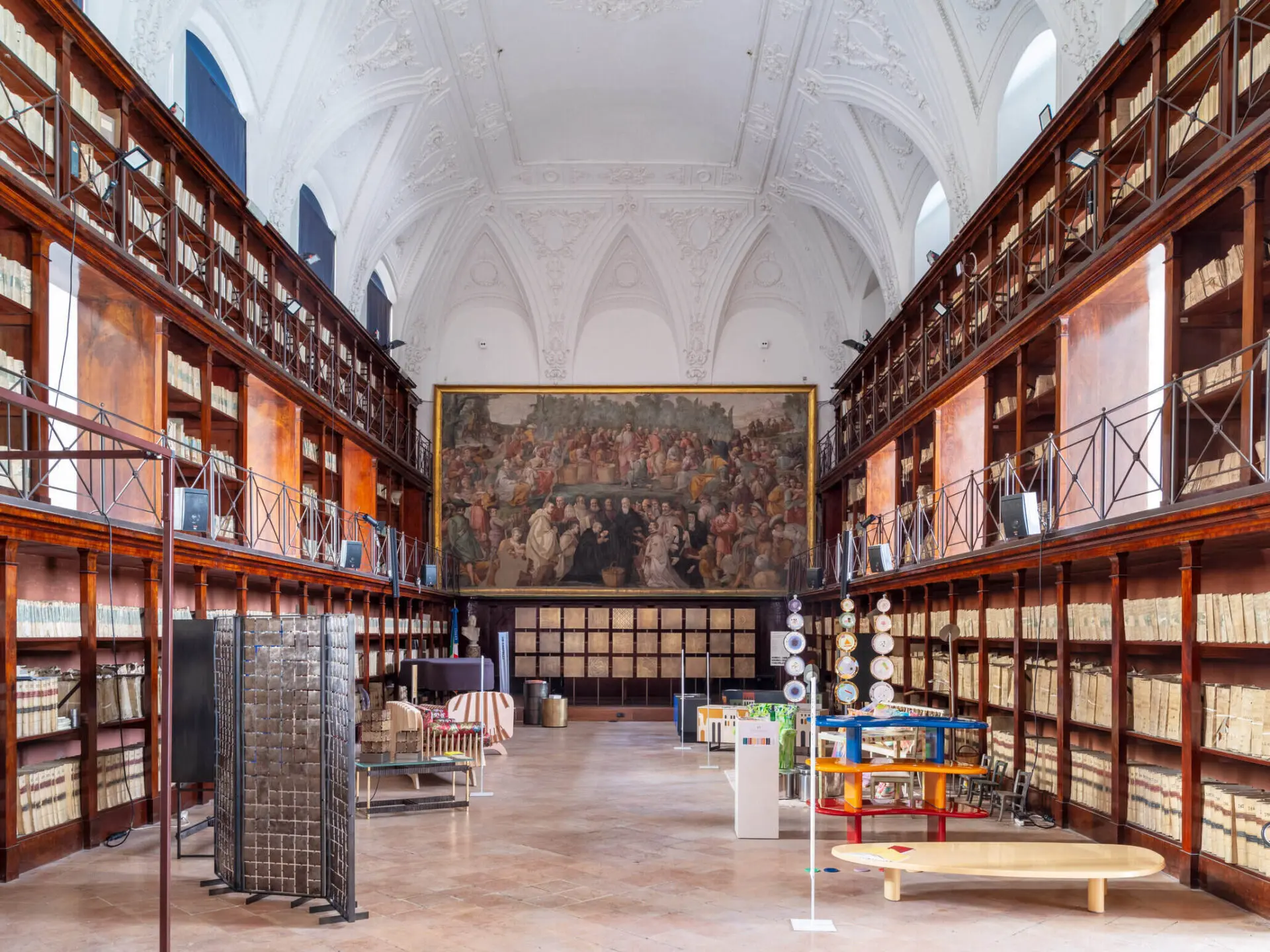
The exhibition in the vetust and dramatically beautiful Archivio di Stato of Naples, is the core location of EDIT Napoli 2024. The address is right at the heart of Spaccanapoli, a precious and extremely lively neighborhood. Along the porticoes of the building hosting the State Archives, little more than one hundred exhibitors displayed a selection of unreleased projects. Many of them were well known to the event’s public, like the winners of the 2023 edition Giorgio Bena and Ruga.perissinotto, and Dante Negro, De Marchi Verona, Eleit.it, Marco Ripa, MAS Design, Mediterranea Design, Monostudio, SKNYP. But there are also newcomers, such as Daniela Pinotti, Ethimo, Luca Gruber, Testatonda Studio, and many more.
Here is the DesignWanted projects selection to synthesize the mood and the best practices seen this year at EDIT Napoli.
EDIT Napoli 2024 – Our 7 highlights
Tempesta by Monostudio
Tempesta is a memento in the form of a chair. The design practice of Monostudio is focused on the resume of waste materials. In this particular project, we are talking about natural waste, the leftovers of a dramatic storm which took place in August 2024 in Milan. Hundreds of trees were knocked down in a few minutes by a raging wind, leaving corpses of ancient vegetal life all over the streets and the parks of the city. A shocking event that led Monostudio to evolve to a different approach to wood. Looking at the tree as a whole and not just as a resource of rough material, Monostudio used both sapwood and heartwood to compose an inclusive structure using all the trunk, not only the hardest part.
“By studying dimensions and the connections between the parts, we sought to highlight the beauty of natural materials and their imperfections through the form,” says Monostudio. The idea is clearly to nurture an intimate and respectful relationship with nature, mourning and honoring what is ordinarily considered a waste, although natural and unharming.
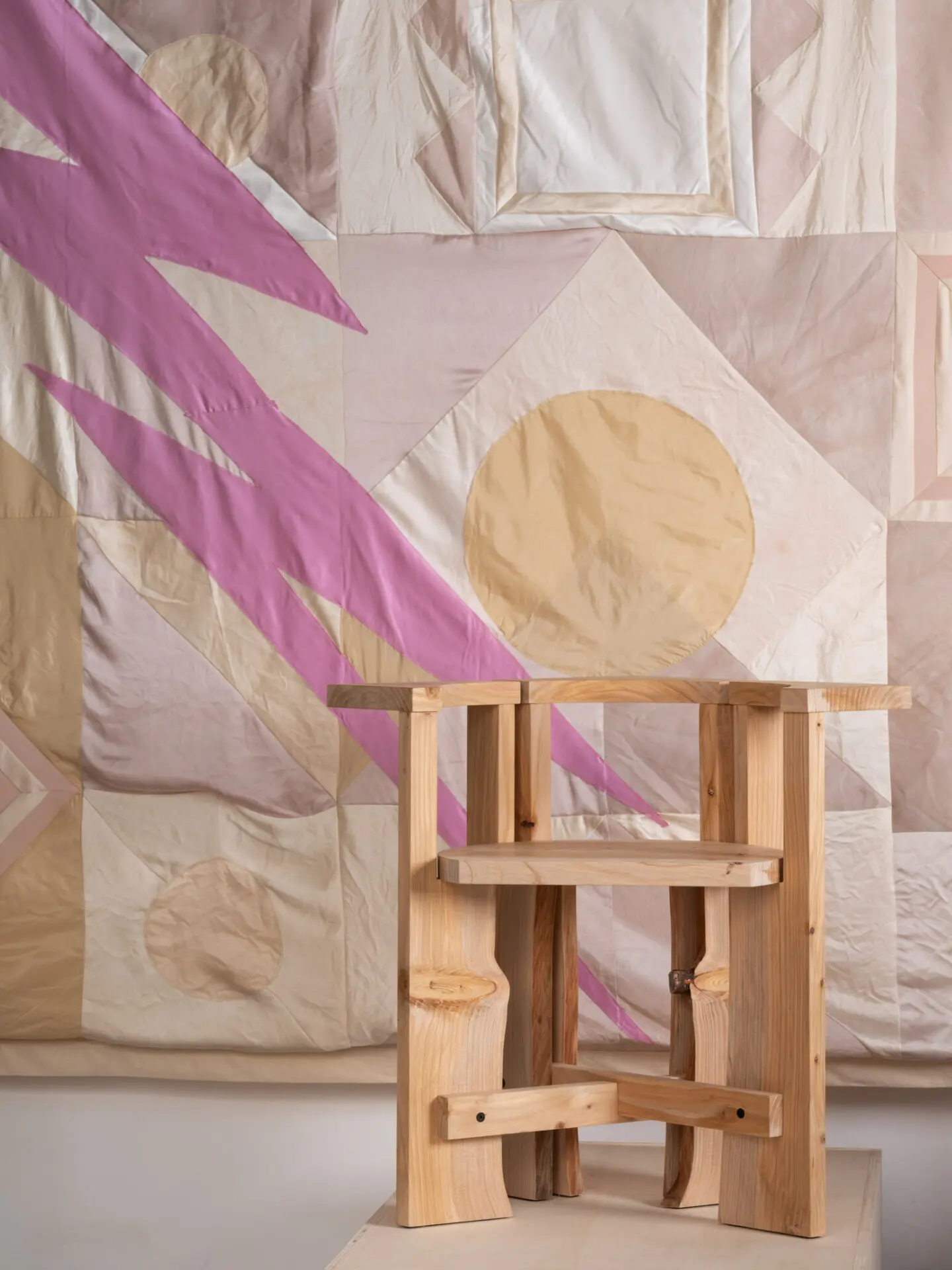
RES 04 by Studio Svar
RES 04 is born from the interest of Jovana Liščević of Studio Svar to reconsider the ordinary perception of discarded materials, not in a utilitarian frame – let’s reuse the waste so to give it new life – but also from an aesthetic side. How do we perceive waste in our aesthetic experience? What do we do with them from a sensorial point of view? Design teaches us to give a soul to objects to respond to a natural human need. Be it the need to feel dignified by beauty, or starting an emotional relationship with objects (which is quite the same thing, so far).
The main point of the RES 04 lamp is not that it is made out of waste materials, in this case, discarded automotive waste. But to infuse beauty and symbolic meaning into it through very ordinary added materials: a colorful rope, metal mesh and LED tapes.
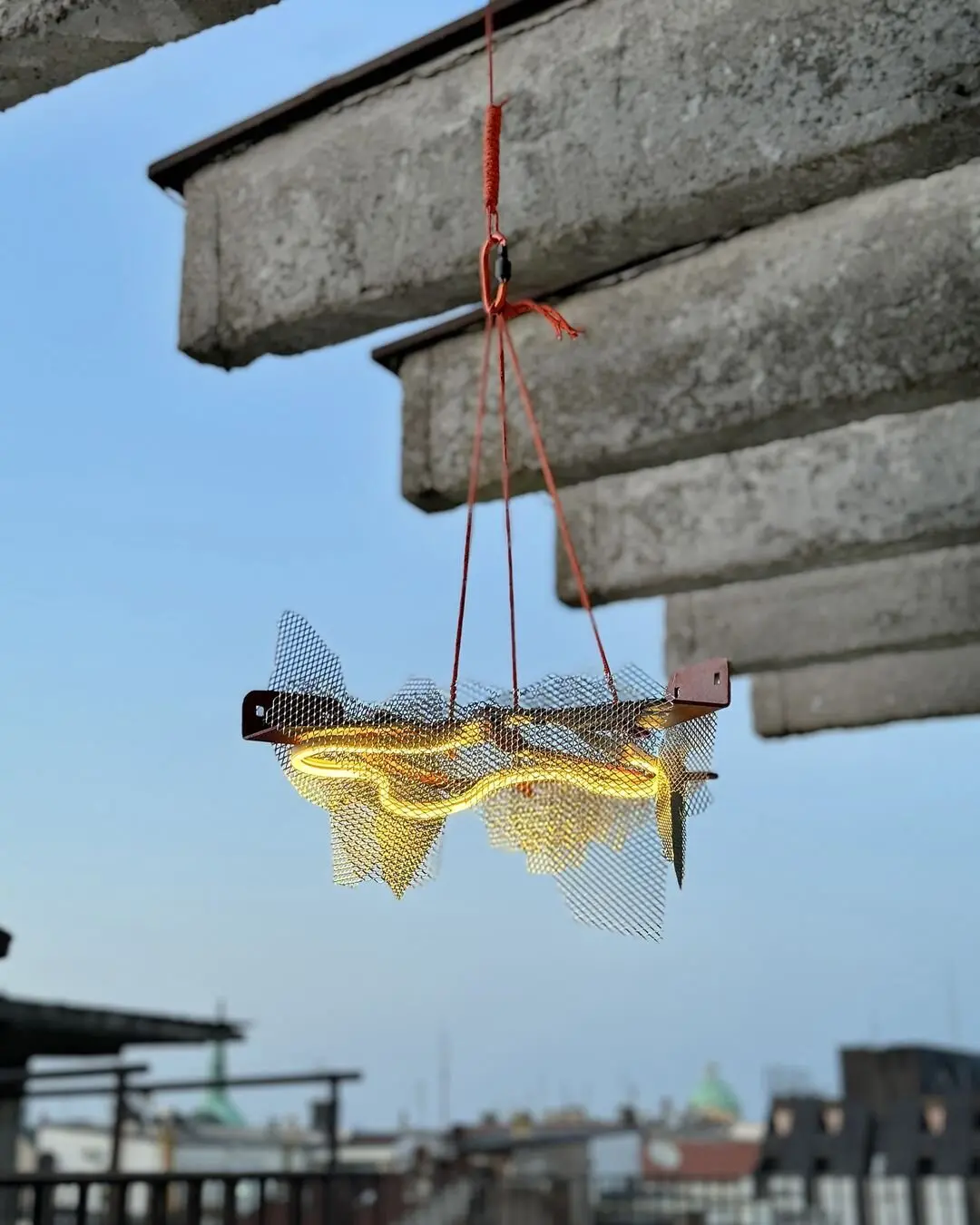
Partitina 0-6 by Gio Tirotto for Lava
“The possibilities of Partitina are endless, but around this table, we like to imagine that group of colleagues who, after a meeting, put down backpacks and bags for a new challenge,” explains The Magma collective in charge of the artistic direction of Lava Project. To put it simply, Partitina is a concept, more than a table. Take a top, which is always a slab in The Top by Marazzi or FENIX®, and add a beautifully designed removable ping-pong net. Then play. Primarily with the reiterated design of the legs.
After five different versions of Partitina, Lava reached out to Gio Tirotto, a talented and more and more emerging Italian designer. He designed Partitina 0-6 taking inspiration from the undulating and unexpectedly regular trajectories of the ping-pong ball. For its semantic and ironic contents, Partitina 0-6 reminds us of the unapologetic attitude of the best Italian design.
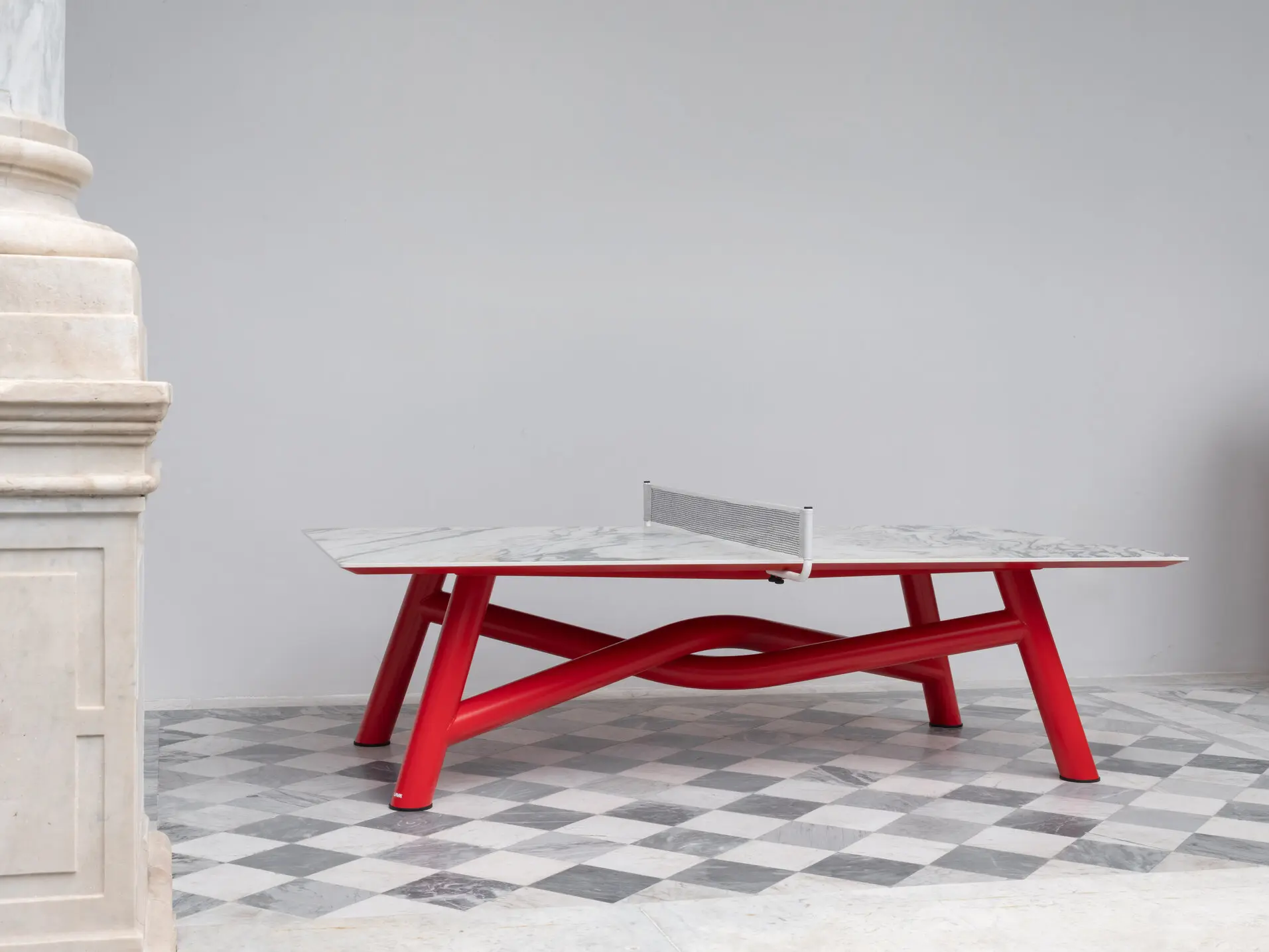
Cucina Zero by Oikos and Debonademeo Studio
Talking about kitchens, Cucina Zero is quite a revolutionary project. The brand Oikos decided to bet on a collaborative proposal asking their clients to rule their choices in matters of design and lifestyle. The turning point of the concept is synthesized in one verb: to simplify. Cucina Zero is a highly customizable monolith aiming to concentrate in just a few pieces all the functions of a contemporary kitchen. The concept comes with an “alphabet” of materials and finishings, along with a range of intuitive components that ensure the right sizes, space and functions.
At EDIT Napoli the brand presented the first interpretation of Cucina Zero: “An auteur creation that encapsulates strong ecological significance, inspired by the colors and materials of the Campanian archipelago—Naples’ deep blue gulf, dotted with islands of stone”. The doors, countertop, and sink are made from a composite of hemp fibers and travertine fragments, recovered from production waste. Sustainability at its best performance.
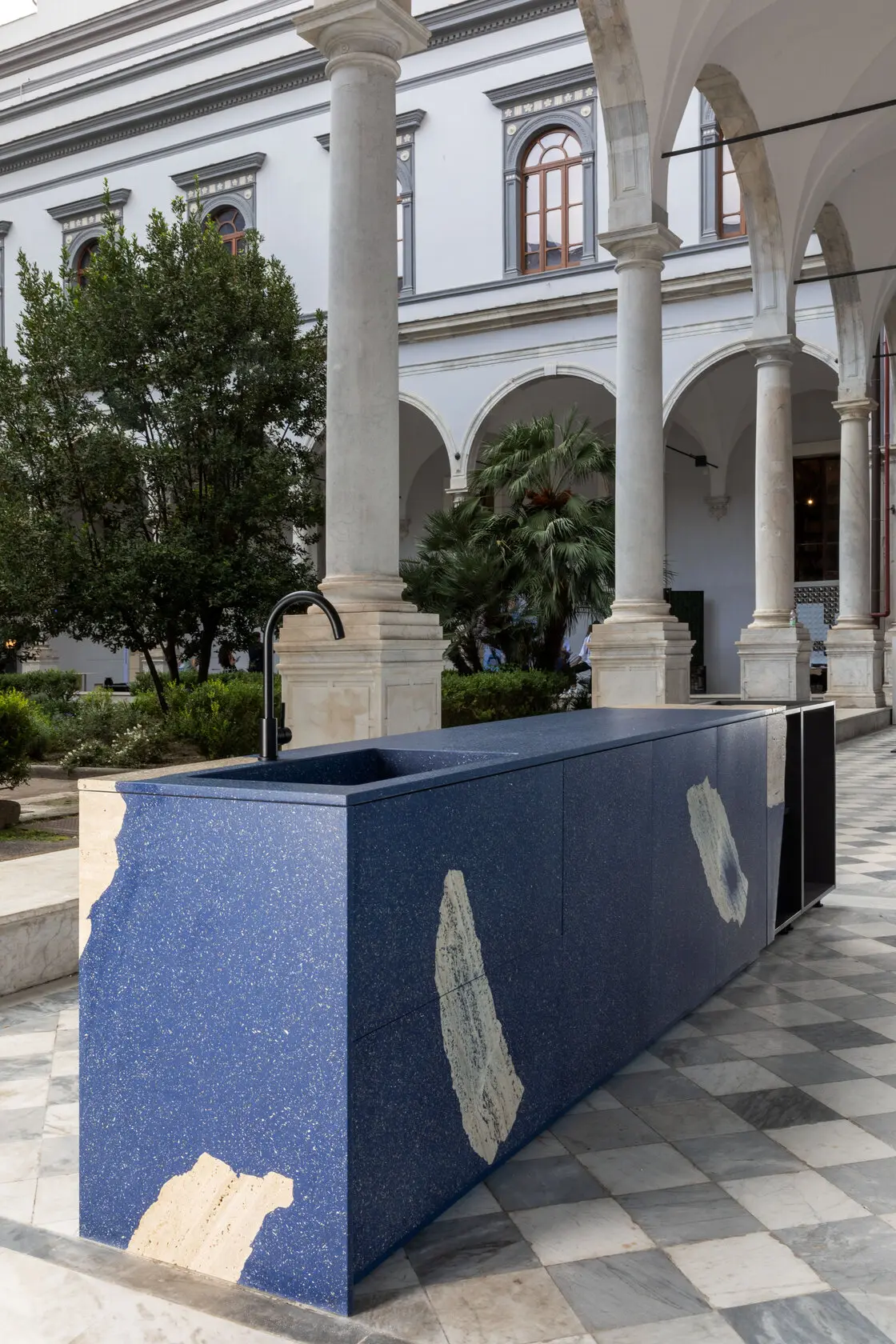
Posa by Luca Pevere and Pulkra
At EDIT Napoli 2024 Pulkra released Posa by Luca Pevere, featured in the new Red shade of the brand. A multifunctional modular system of tables and seats that can be assembled following the walls of a space, just like a ceramic slab surface. Modules may be added according to spatial needs, offering a smart solution for collective spaces like hotels and restaurants. The tactile and aesthetic qualities of Akron concrete are a good choice for domestic spaces either and the modularity of Posa is a chance to integrate Pulkra’s items also in small dining corners or an entry hall. Pulkra was one of the best novelties of the last Milan Design Week in April 2024. A new brand working with a very technical material – Akron concrete – on very counterintuitive furniture projects.
While the world goes for lightness and dematerialization, Pulkra chooses boldness and, to a certain degree, eternity. The art direction of Stormo Studio is based on the word “authenticity”. “We are talking about a very peculiar material: concrete. We want it to become authorial without losing its peculiarity. We do not want to hide it, on the contrary. That’s why we chose to learn from Brutalists, who used to love concrete so much. We really think that working with outstanding and strong materials to build sculptural pieces is one of the best sustainable practices”, states Elena Calabrò of Stormo Studio.
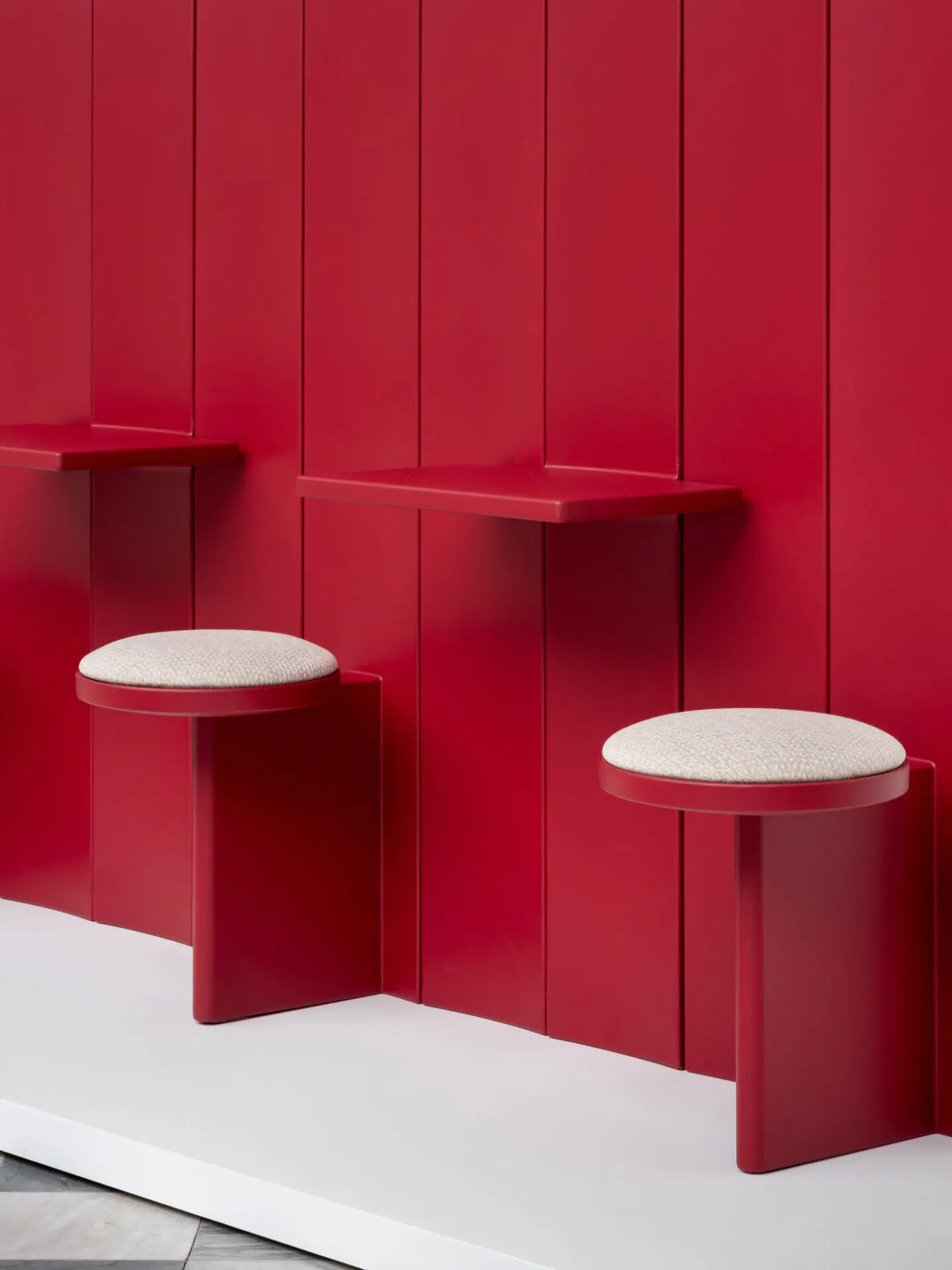
Plĭco by Atelier Nuanda
The project of Atelier Nuanda was awarded by the jury of EDIT Napoli 2024 in the section Seminario. Plĭco is a divider made of light aluminum slabs and a knitted leather structure which is the signature feature of the textile artist Cecilia Rinaldi. Her work has been focused since now on the brink of fashion and jewel design. Plĭco is apparently an evolution, a dimensional jump promising a new stage for the sophisticated artisan aiming to bring memories, traditions and high handcraft to the contemporary design world.
We think that the main point of Atelier Nuanda’s work is a biographical junction of personal skills and the will to bring an intimate vision of creativity to the world. Besides the very interesting project of Plĭco, there’s more. A different way to let the world see and participate in Italian craftsmanship, to share a vision which is nurtured by history and tradition and a profound personal engagement in a minor art.
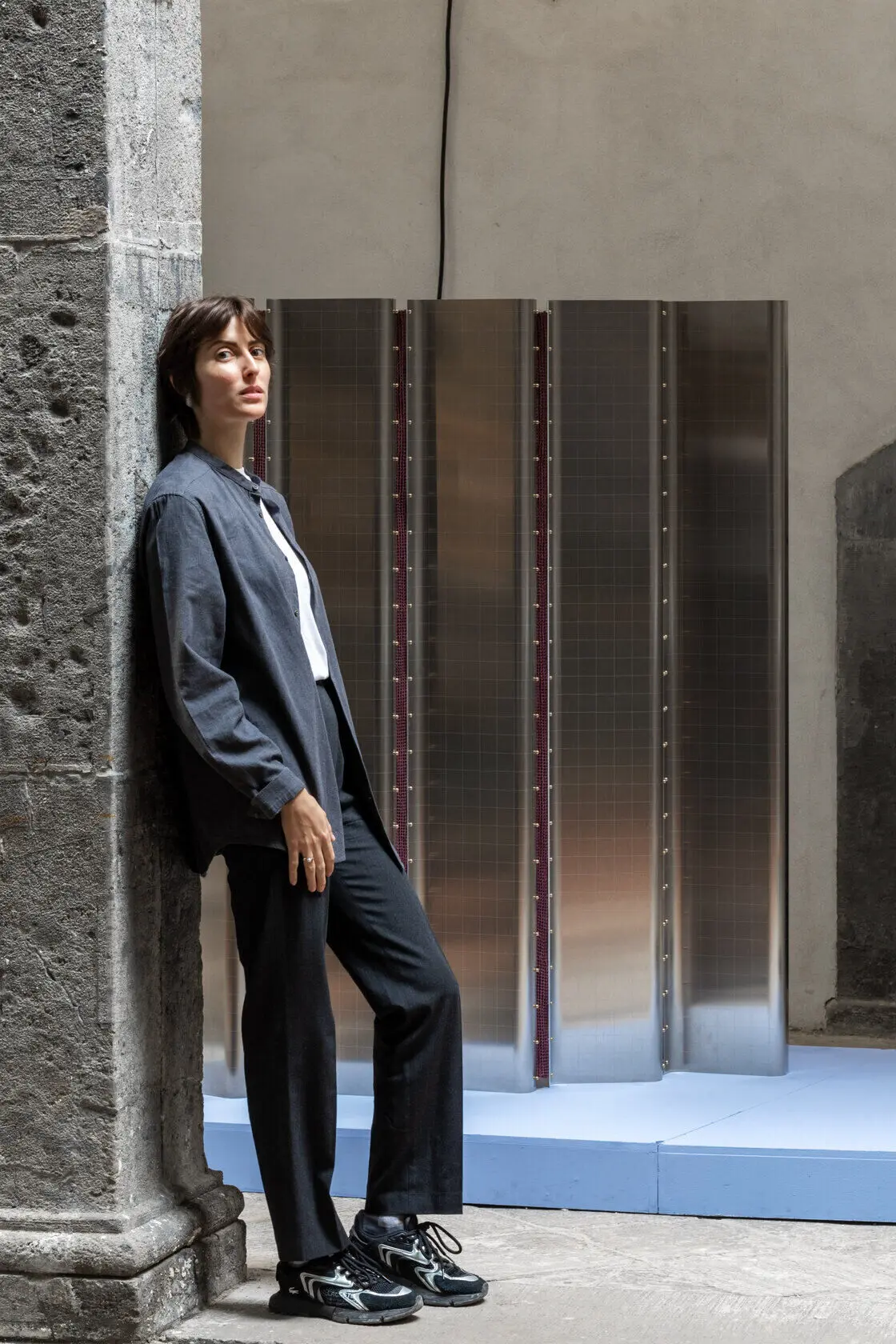
Stone Table by Madlen Ceramics
Madlen Ceramics’ founder Cristina Firotto is one of the emerging Italian designers who found in ceramic their best research practice. At EDIT Napoli 2024 she presented Stone Table, a project involving a thorough experimentation on the relation between human daily gestures and the natural material, finding a way to transform ergonomics in a supple, slow, emotional discipline. She imagined shapes manipulated by the presence and the weight of a human hand. An organic imprint on the rough and still soft material, the trace of an action, of its dynamic force on ceramic.
The result is hypnotic, as it often happens with the work of what is delineating as a new wave of young Italian ceramists combining design and handcraft. The turning point is the superposition of what once were two distinct roles: the artisan and the designer. Here they are the same person, and it is very easy to see the difference.
